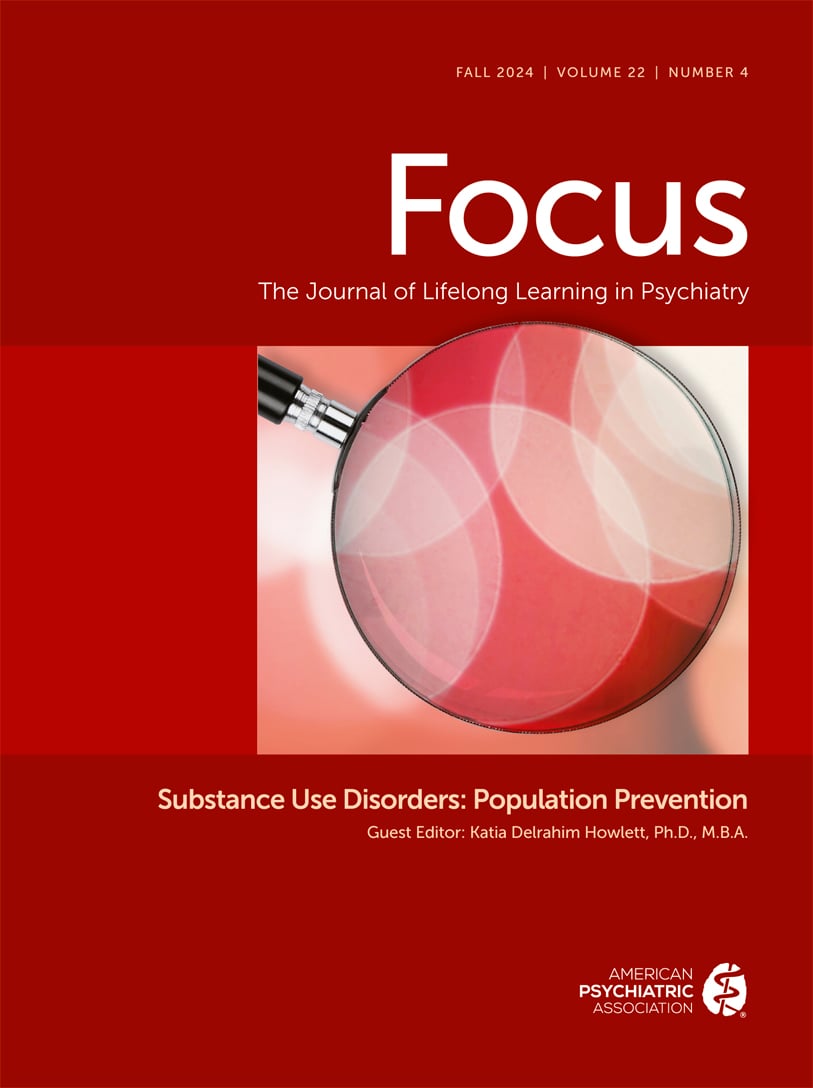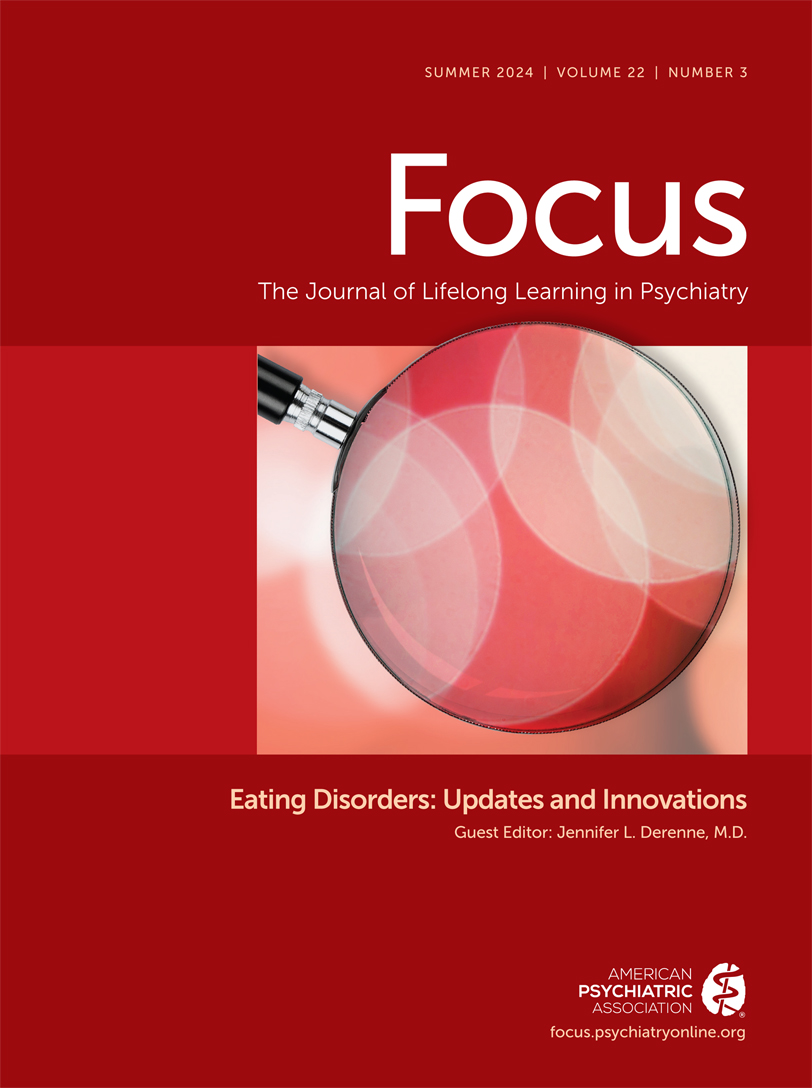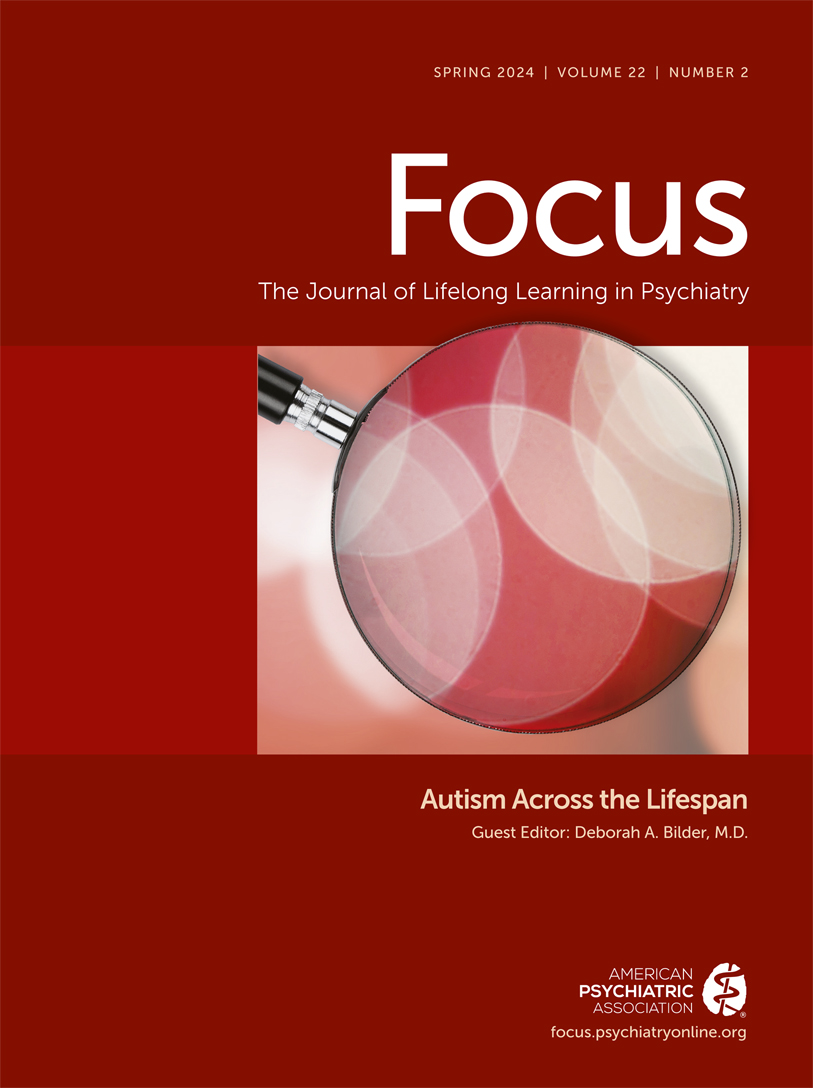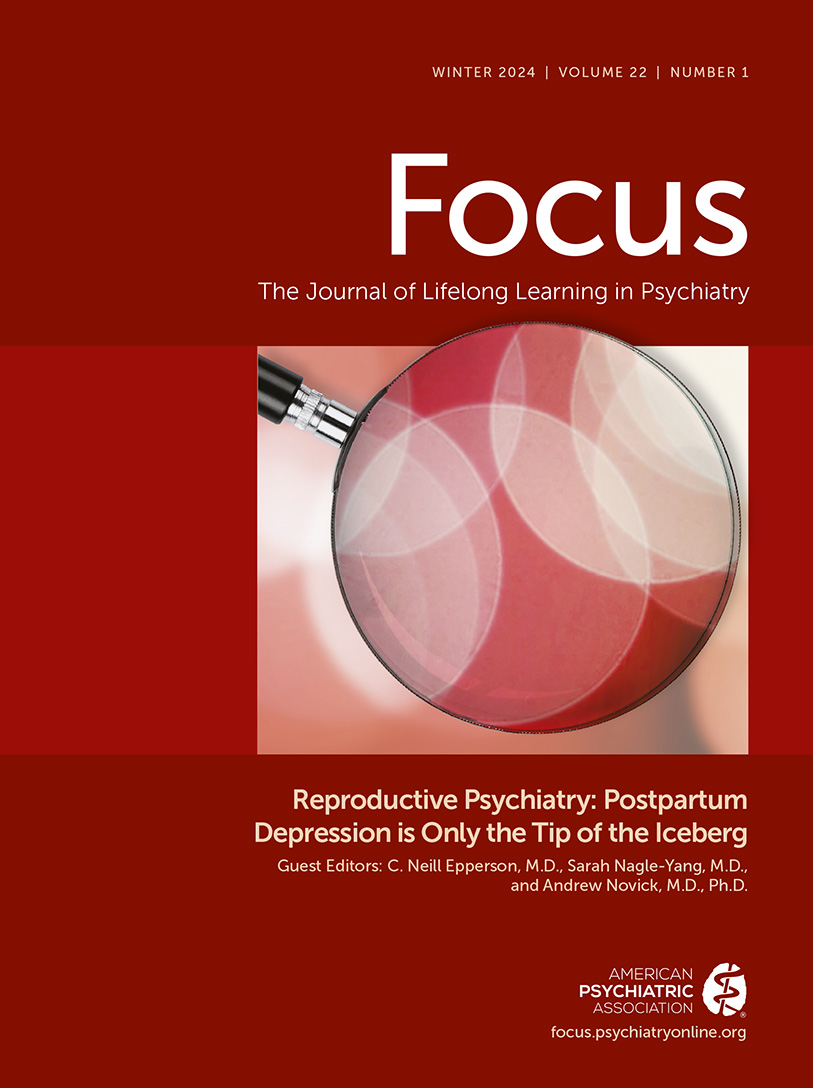Focus
- Volume 4
- Number 3
- August 2006
EDITORIAL
CLINICAL SYNTHESIS
Publication date: 01 August 2006
Pages317–326Genetic etiology plays at least a partial role in most psychiatric disorders. Consistently replicated linkage and association findings of psychiatric disorders are, however, rare. Multiple genetic risk factors are likely to interact with each other and ...
https://doi.org/10.1176/foc.4.3.317Publication date: 01 August 2006
Pages327–338Many important psychiatric disorders have a strong hereditary component, posing the problem of characterizing the biological mechanisms translating from the genetic level to that of complex social and behavioral abnormalities. The new field of imaging ...
https://doi.org/10.1176/foc.4.3.327Publication date: 01 August 2006
Pages339–343The field of psychiatric genomics has developed dramatically over the past 10 years. The essential goal of psychiatric pharmacogenomics is to measure genetic variation in individual patients to predict their response to psychotropic medications. The ...
https://doi.org/10.1176/foc.4.3.339INFLUENTIAL PUBLICATIONS
Publication date: 01 August 2006
Pages350–359Genetic variation in neuregulin 1 (NRG1) is associated with schizophrenia. The disease-associated SNPs are noncoding, and their functional implications remain unknown. We hypothesized that differential expression of the NRG1 gene explains its association ...
https://doi.org/10.1176/foc.4.3.350Publication date: 01 August 2006
Pages360–368Neurobiological factors contributing to violence in humans remain poorly understood. One approach to this question is examining allelic variation in the X-linked monoamine oxidase A (MAOA) gene, previously associated with impulsive aggression in animals ...
https://doi.org/10.1176/foc.4.3.360Publication date: 01 August 2006
Pages369–377Schizophrenia is a devastating psychiatric disorder that affects ~1% of the population worldwide. It is characterized by so-called ‘positive symptoms’–including delusions and hallucinations–‘negative symptoms’–including blunted emotions and social ...
https://doi.org/10.1176/foc.4.3.369Publication date: 01 August 2006
Pages378–390Human brain maturation is a complex, lifelong process that can now be examined in detail using neuroimaging techniques. Ongoing projects scan subjects longitudinally with structural magnetic resonance imaging (MRI), enabling the time-course and anatomical ...
https://doi.org/10.1176/foc.4.3.378Publication date: 01 August 2006
Pages391–400A central phrase in the new “GeneTalk” is “X is a gene for Y,” in which X is a particular gene on the human genome and Y is a complex human disorder or trait. This article begins by sketching the historical origins of this phrase and the concept of the ...
https://doi.org/10.1176/foc.4.3.391Publication date: 01 August 2006
Pages401–415The addictions are common chronic psychiatric diseases that today are prevented and treated using relatively untargeted and only partially effective methods. The addictions are moderately to highly heritable, which is paradoxical because these disorders ...
https://doi.org/10.1176/foc.4.3.401Publication date: 01 August 2006
Pages416–422Genetic research has moved from Mendelian genetics to sequence maps to the study of natural human genetic variation at the level of the genome. This past decade of discovery has been accompanied by a shift in emphasis towards the ethical principles of ...
https://doi.org/10.1176/foc.4.3.416Publication date: 01 August 2006
Pages423–430Schizophrenia has long been thought to be clinically heterogeneous. A range of studies suggests that this is due to genetic heterogeneity. Some clinical features, such as negative symptoms, are associated with a greater risk of illness in relatives. ...
https://doi.org/10.1176/foc.4.3.423Publication date: 01 August 2006
Pages431–441Pharmacogenetics is the study of the role of inheritance in inter-individual variation in drug response. Since its origins in the mid-twentieth century, a major driving force in pharmacogenetics research has been the promise of individualized drug therapy ...
https://doi.org/10.1176/foc.4.3.431Publication date: 01 August 2006
Pages442–458Medical genetics was revolutionized during the 1980s by the application of genetic mapping to locate the genes responsible for simple Mendelian diseases. Most diseases and traits, however, do not follow simple inheritance patterns. Geneticists have thus ...
https://doi.org/10.1176/foc.4.3.442Past Issues
View Issues Archive
Vol. 22 | No. 4

Vol. 22 | No. 3

Vol. 22 | No. 2
